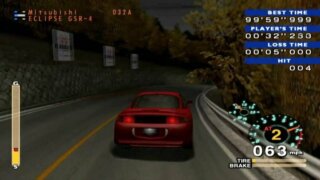
The biggest problem I had with the game was in the responses to collisions. Learning how the parts interact to affect overall performance will be the key to winning against the top-end opponents. Slapping a cool looking exhaust system behind a stock engine will give almost no performance enhancement, but put that same system on a car that's equipped with a finely tunes turbo engine and you'll see a big difference. A huge amount of attention to detail is evident in the tune up selections - rather than having a general engine "upgrade" that always makes the car better the more you spend, you must find a balance between the parts and upgrades you select.

This is where the garage comes in.Įvery detail on your car, from the gearing ratios and cam size in the engine to the exhaust system and chassis are upgradeable. To win even the early races you will need a car with solid performance - most of the cars you can afford just won't cut it coming out of the showroom. When you start the game you have a limited amount of cash to purchase and equip your racing machine. Winning is based on your driving skills to some extent, but is largelypredicated on your car's performance. The further behind you fall, the faster your SP bar will drop - when it runs out you've lost the race. Each racer starts with a full Speed Point (SP) bar that decreases slowly when they are in second place. Once the challenge has been accepted, the race begins. Starting a race is as easy as pulling up behind an opponent and flashing your lights.

There are no preset start and finish lines here - instead the game uses a "Speed Point" system of scoring to determine the winner.

You're racing against a single opponent through the traffic laden highways of Tokyo, but the real difference is in how you win. At its most basic, Tokyo Xtreme Racer Zero looks a lot like many other titles on the market.


 0 kommentar(er)
0 kommentar(er)
